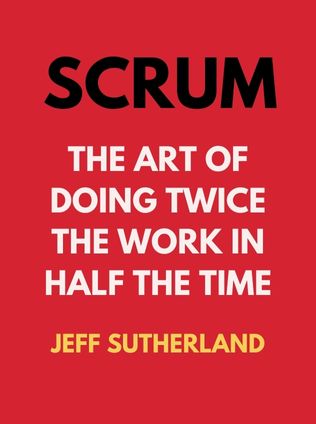
Scrum
The Art of Doing Twice the Work in Half the Time
By Jeff Sutherland
Published 01/2014
About the Author
Jeff Sutherland, a visionary in the field of software development, is widely known as the co-creator of the Scrum framework—a revolutionary approach to project management that has transformed the way teams collaborate and deliver results. Sutherland's diverse background, which includes experience as a fighter pilot and an Assistant Professor at the University of Colorado Medical School, brings a unique perspective to the world of business and technology. His deep understanding of complex systems and the human factors involved in them is evident in his work on Scrum, a framework he developed alongside Ken Schwaber to streamline processes, reduce inefficiencies, and enhance productivity. Over the years, Sutherland has helped numerous businesses adopt Scrum, leading to substantial improvements in their operations.
Main Idea
In his seminal work, Scrum: The Art of Doing Twice the Work in Half the Time, Jeff Sutherland presents the Scrum framework as a game-changing alternative to traditional project management methods. Sutherland argues that the conventional top-down management approach is inherently flawed, leading to wasted time, reduced efficiency, and suboptimal results. Scrum, on the other hand, is designed to foster creativity, adaptability, and rapid progress by focusing on incremental progress, regular check-ins, and the elimination of waste. The framework's simplicity and flexibility allow it to be adapted across various industries, making it a powerful tool for organizations seeking to improve their productivity and deliver value more efficiently.
Table of Contents
- Introduction to Scrum
- The Pillars of Scrum: Incremental Progress and Adaptability
- Building an Effective Scrum Team
- The Scrum Framework: From Vision to Execution
- Working in Sprints: The Heart of Scrum
- Daily Meetings: The Pulse of the Team
- Demonstrating Value: The Importance of Prototyping
- Reflecting and Adapting: Continuous Improvement
- The Future of Scrum: Adaptability in a Changing World
Introduction to Scrum
Scrum is more than just a framework; it is a mindset that challenges traditional methods of working and managing projects. At its core, Scrum is designed to help teams efficiently solve complex problems by breaking down tasks into manageable increments and encouraging regular feedback and adaptation. As Sutherland explains, "The way the business world operates is fundamentally flawed," and Scrum provides a way to correct these inefficiencies by focusing on what truly matters—delivering value in the shortest time possible.
Sign up for FREE and get access to 1,400+ books summaries.
You May Also Like
The Life-Changing Magic of Tidying Up
The Japanese Art of Decluttering and Organizing
By Marie KondoThe Lean Startup
How Today's Entrepreneurs Use Continuous Innovation to Create Radically Successful Businesses
By Eric RiesWho Moved My Cheese?
An Amazing Way to Deal with Change in Your Work and in Your Life
By Spencer Johnson, M.D.Make Your Bed
Little Things That Can Change Your Life...And Maybe the World
By William H. McRaven



















